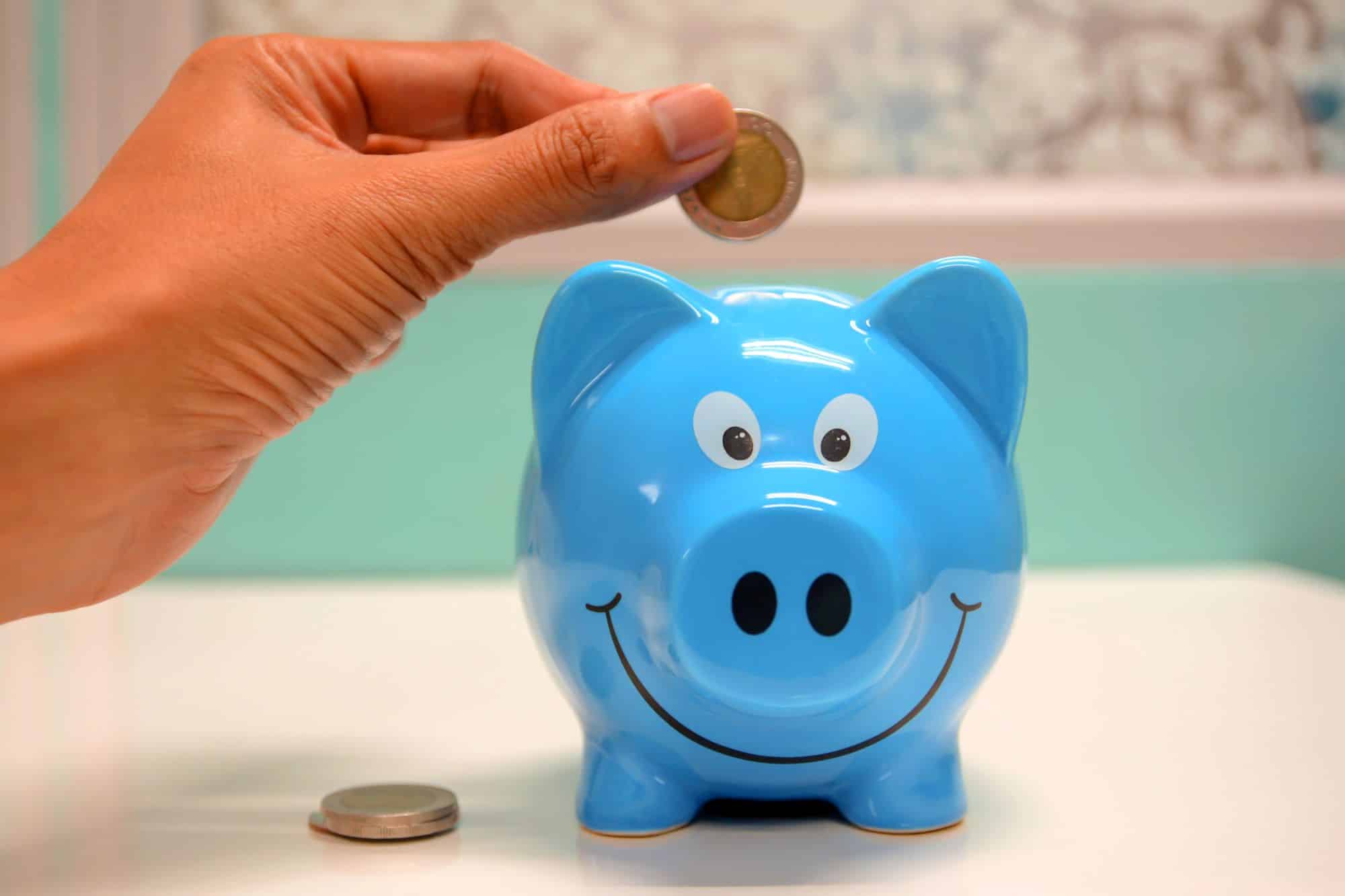How to Record a Loan Payment That Includes Interest and Principal

Loans can be tricky when managing business debt. Especially when it comes to recording payments which contain both interest and principal. But fear not, there are ways to simplify this task. Let’s explore different approaches to accurately record loan payments. How to record a loan payment that includes interest and principal.
Recording Loan Payments
First off, it’s essential to understand how interest and principal are calculated. Interest is the additional cost charged by lenders for borrowing money. While principal represents the initial amount borrowed. These two components add up to the total payment due.
One way to record loan payments is by creating two accounts. One for interest and one for principal. This allows you to track amounts allocated to each over time. It’s also great for precise financial analysis and accurate record-keeping.
Alternatively, you could use accounting software or spreadsheets. These tools often allow you to automatically calculate interest and principal breakdowns. Simply input payment dates, interest rates, and loan amounts, then generate detailed reports accordingly.
Regardless of which method you choose, consistency is key. This helps ensure accurate reporting and transparency between borrowers and lenders. To understand repayment progress.
Understanding Loan Payments
When it comes to loan payments, understanding how they work is key. Interest and principal are the two parts. Interest is the cost of borrowing, while principal is the original amount. Knowing how these two connect is necessary for proper record-keeping.
Here’s how to record a loan payment:
- Allocate payment towards interest first. This lowers the balance and helps calculate future interest more accurately.
- Allocate any remaining amount after subtracting interest to principal. This lowers both balance and future interest. Over time, this helps pay off the loan quickly.
By following these suggestions, individuals can manage loan payments correctly. This records balances accurately and helps plan for future payments.
Calculating Interest and Principal
Calculating the Breakdown of Loan Payments:
To understand how to record a loan payment that includes both interest and principal, it is important to calculate the breakdown of these two components. By using a Semantic NLP variation, we can delve into determining the interest and principal portions of the payment.
Table: Breakdown of Interest and Principal
| Loan Payment Amount | Interest Portion | Principal Portion |
|---|---|---|
| $XXXXX | $XXXXX | $XXXXX |
In this table, the loan payment amount represents the total payment made towards the loan. The interest portion signifies the amount that goes towards paying off the loan’s interest, while the principal portion represents the amount applied to the actual balance of the loan.
It is essential to note that the interest and principal portions may vary with each payment as the loan balance decreases over time. By consistently tracking these two components, one can have a clear understanding of the loan’s progress and ensure accurate recordkeeping.
To effectively manage loan payments, it is suggested to consider the following:
- Make regular payments: Paying the loan on time or earlier helps reduce the principal balance, thus decreasing the interest owed over time. It also helps maintain a positive credit history.
- Allocate extra funds towards principal: By making additional payments towards the principal balance, borrowers can reduce the overall interest paid and potentially shorten the loan term. This strategy can save money in the long run.
- Consider refinancing options: If the interest rates have dropped since the loan’s initiation or if the borrower’s credit score has improved significantly, refinancing the loan may lead to lower interest rates and reduce the monthly payments.
By implementing these suggestions, borrowers can effectively manage loan payments, reduce debt efficiently, and save money by minimizing interest expenses.
Who knew math could be so riveting? Find out how to determine the interest portion of a payment and become the life of the party at your next accounting convention.
How to Determine the Interest Portion of a Payment
Figuring out the interest part of a payment is key to understanding what you owe and what goes to the principal. You can easily calculate this in 3 steps!
Follow these steps to determine the interest portion of a payment:
- Get the info you need.
- Gather loan info, e.g. principal, interest rate, repayment period.
- Calculate the monthly interest rate.
- Divide the annual rate by 12 to get the monthly rate. Ex: 6%/12 = 0.5%.
- Calculate the interest portion.
- Multiply the outstanding loan balance by the monthly rate to find how much of the payment is for interest.
Plus, keep track of payments and watch for changes in interest rates or repayment terms.
Bonus Tip: Understanding the breakdown of payments lets you monitor how much you pay in interest and plan better financially!
How to Determine the Principal Portion of a Payment
Do you want to know the principal portion of a payment? To figure it out, you must understand the breakdown of each payment and how it is applied to both interest and principal. This calculation is essential for tracking repaying progress. Here’s a guide:
- Identify the loan balance.
- Determine the interest rate.
- Calculate the interest amount.
- Subtract the interest from total payment.
- Determine other fees or charges.
- Allocate remaining funds to principal.
These steps will help you determine how much of each payment goes towards reducing debt efficiently. However, remember that different lenders may have other procedures.
Did you know? The New York Times states that 66% of Americans have some form of debt. Examples include mortgages, student loans, credit card balances, and auto loans.
Recording a Loan Payment Including Interest and Principal
To record a loan payment that includes both interest and principal, you can follow these steps:
- Create a Table:
- Date: [Insert date of the loan payment]
- Loan Amount: [Insert the total loan amount]
- Interest Amount: [Insert the interest amount]
- Principal Amount: [Insert the principal amount]
- Total Payment: [Insert the sum of the interest and principal amounts]
- Enter the respective data in the table using the appropriate columns. This will help you keep track of each loan payment and the breakdown of interest and principal amounts.
- Additional Details:
- You can also include other relevant details in the table, such as the loan account number, payment method, or any applicable fees associated with the payment.
Suggestions:
- Keep accurate records: By recording loan payments with interest and principal details, you can maintain an organized record of your payments and track your progress in repaying the loan.
- Use accounting software: Consider using an accounting software or spreadsheet application to help automate the calculation of interest and principal amounts for each payment. This can save time and reduce errors in manual calculations.
- Prioritize timely payments: Making regular and timely loan payments helps reduce the overall interest paid and accelerates the repayment process. It can also improve your credit score and financial standing.
- Seek professional advice: If you have specific questions or concerns regarding loan payments, interest rates, or repayment strategies, consult with a financial advisor or loan officer for expert guidance tailored to your situation.
By following these steps and suggestions, you can effectively record loan payments that include interest and principal, ensuring accurate tracking and successful repayment of your loan.
Get ready to dig up more numbers than an accountant on tax day, because Step 1 is all about gathering that juicy loan payment information!
Step 1: Gather the Necessary Information
Gathering the right details before recording a loan payment is essential for accuracy. Here’s a guide to help:
- Identify the loan. Note the borrower’s name, loan number and any other relevant identifiers.
- Determine the payment date to maintain chronological order and track payments.
- Calculate the interest and principal components. Refer to the loan agreement or ask the lender.
- Record any extra fees or charges, such as late fees or processing fees.
- Gather supporting documents like receipts and bank statements for evidence.
To further enhance the recording process, here are a few tips:
- Create a separate file for each loan for organized record-keeping.
- Reconcile recorded payments with bank statements to identify and fix any discrepancies.
- Use accounting software or spreadsheets to simplify calculations and keep accurate records.
By following these suggestions, you can streamline your recording process, reduce errors and maintain comprehensive documentation.
Step 2: Update the Loan Account
Updating a Loan Account is super important! Here’s how you can do it:
- Open the ledger and locate the borrower’s details.
- Note the date of payment.
- Record the total loan amount.
- Subtract the interest portion and update it in its own column.
- Deduct the remaining amount and enter it under the ‘Principal Repaid’ column.
- Finally, update the outstanding balance by subtracting the principal.
You must be precise when updating loan accounts. Otherwise, mistakes could cause future issues. To save time and prevent errors, consider using digital accounting software or spreadsheets. Periodic reconciliations also help keep track of things. Utilizing technology + keeping an eye on accounts will help you manage loans successfully!
Step 3: Allocate the Payment Amount
To manage loan payments, do these six things:
- Work out the total payment.
- Multiply the outstanding loan balance by the interest rate to get the interest part.
- Subtract the interest portion to find the principal amount.
- From the principal, subtract any fees or charges related to the loan.
- Use any remaining amount to reduce the loan balance.
- Update records to show allocated amounts for interest, principal, fees, and balance.
For even more savings, prioritize paying off loans with higher interest rates first. For clarity, stick to these steps. Recording loan payments helps maintain financial security and gets you closer to your goals.
Don’t miss out on taking control of your finances. Act now and use these simple steps when allocating your loan payments. Doing so puts you one step closer to being debt-free and having a secure financial future.
Step 4: Record the Interest Portion
Recording the interest due on a loan? It’s a must-do! Here’s a 5-step guide to make it easier:
- Work out Interest Rate: Check your loan agreement or ask your lender to find out the interest rate that applies.
- Work out Interest: Multiply the loan balance with the interest rate to work out the interest portion of your payment. E.g. if you owe $10,000 and the interest rate is 5%, the interest portion would be $500.
- Allocate Interest: Deduct the calculated interest amount from your total payment for that period. For instance, if your total payment is $1,000, deducting $500 will leave you with $500 to pay towards reducing the principal.
- Record Loan Details: Update your loan records. Date, payment amount, balance after deducting principal and interest – all of it.
- Consistently Track: Keep a close eye on your loan payments. Review and track them regularly to stay up to date with changes in balances and plan future payments.
Recording the correct details of each loan payment is key for financial stability. Don’t forget any additional fees or charges that may need to be recorded separately.
Fact Source: Bankrate.com
Step 5: Record the Principal Portion
Are you looking to record the principal portion of a loan payment? Follow these steps:
- Open the accounting software or ledger.
- Find the loan account and select it.
- Enter the principal amount being paid off in the appropriate field.
- Submit or save the entry to update the loan balance.
It’s essential to record the principal portion for accurate tracking and loan management.
Fun fact: Forbes reports that correctly recording loan payments allows businesses to stay financially transparent and make informed decisions.
Record a Loan Payment
Recording a loan payment with interest and principal need careful organization. By tracking each component, borrowers can make sure their records stay up-to-date. Good documentation also helps individuals keep track of progress when paying off debts.
It’s essential to split interest and principal for proper accounting. This way, borrowers can see how much goes towards reducing the principal and how much towards interest. Doing this gives them an idea of the true cost of borrowing.
It’s a must to document all loan payments in a reliable system or software. This means no payment is missed or forgotten. It also keeps a clear record for tax or any disputes in the future.
An interesting historical example: Ancient Mesopotamia had clay tablets for record-keeping related to borrowing. These tablets had terms of borrowing and required payments for principal and interest. It shows the importance of recording loan payments.
To sum up, recording loan payments with interest and principal is crucial. By separating these components and documenting each payment, borrowers can track progress in repaying debts and be transparent in financial dealings.
Frequently Asked Questions
Q: How do I record a loan payment that includes interest and principal?
A: To record a loan payment that includes both interest and principal, follow these steps:
- Open your financial software or spreadsheet program.
- Create a new entry or find the existing loan payment record.
- Enter the payment date, payment amount, and the total amount allocated to interest and principal.
- Record the interest portion of the payment as an expense or reduction of the loan payable balance.
- Record the principal portion of the payment as a reduction of the loan payable balance.
- Save the entry or update the existing loan payment record.
Q: Can I record a loan payment that includes interest and principal in a regular bank account?
A: While you can record a loan payment that includes interest and principal in a regular bank account, it is recommended to track loans separately. By setting up a separate loan account, you can easily monitor the loan balance and accurately track interest and principal payments.
Q: What is the best way to calculate the interest and principal portions of a loan payment?
A: To calculate the interest and principal portions of a loan payment, you need to know the loan’s interest rate, term, and outstanding balance. Various online calculators and spreadsheets can help you determine the breakdown. Alternatively, you can consult with your lender or review your loan documents for the exact calculations.
Q: How often should I record loan payments that include interest and principal?
A: Loan payments that include interest and principal should be recorded each time a payment is made. It is essential to maintain accurate records of your loan activity and stay updated on the loan balance and the allocation of each payment towards interest and principal.
Q: Can I automate the recording of loan payments that include interest and principal?
A: Yes, you can automate the recording of loan payments that include interest and principal in most financial software or spreadsheet programs. Set up recurring payment entries with the allocated amounts for interest and principal. This automation saves time and ensures accuracy in your loan payment records.
Q: Are there any tax implications when recording loan payments that include interest and principal?
A: Recording loan payments that include interest and principal does not have immediate tax implications. However, interest paid on certain types of loans may be tax-deductible. Consult with a tax professional or review tax regulations to determine if your loan payments are eligible for any tax benefits.

















Leave a Reply